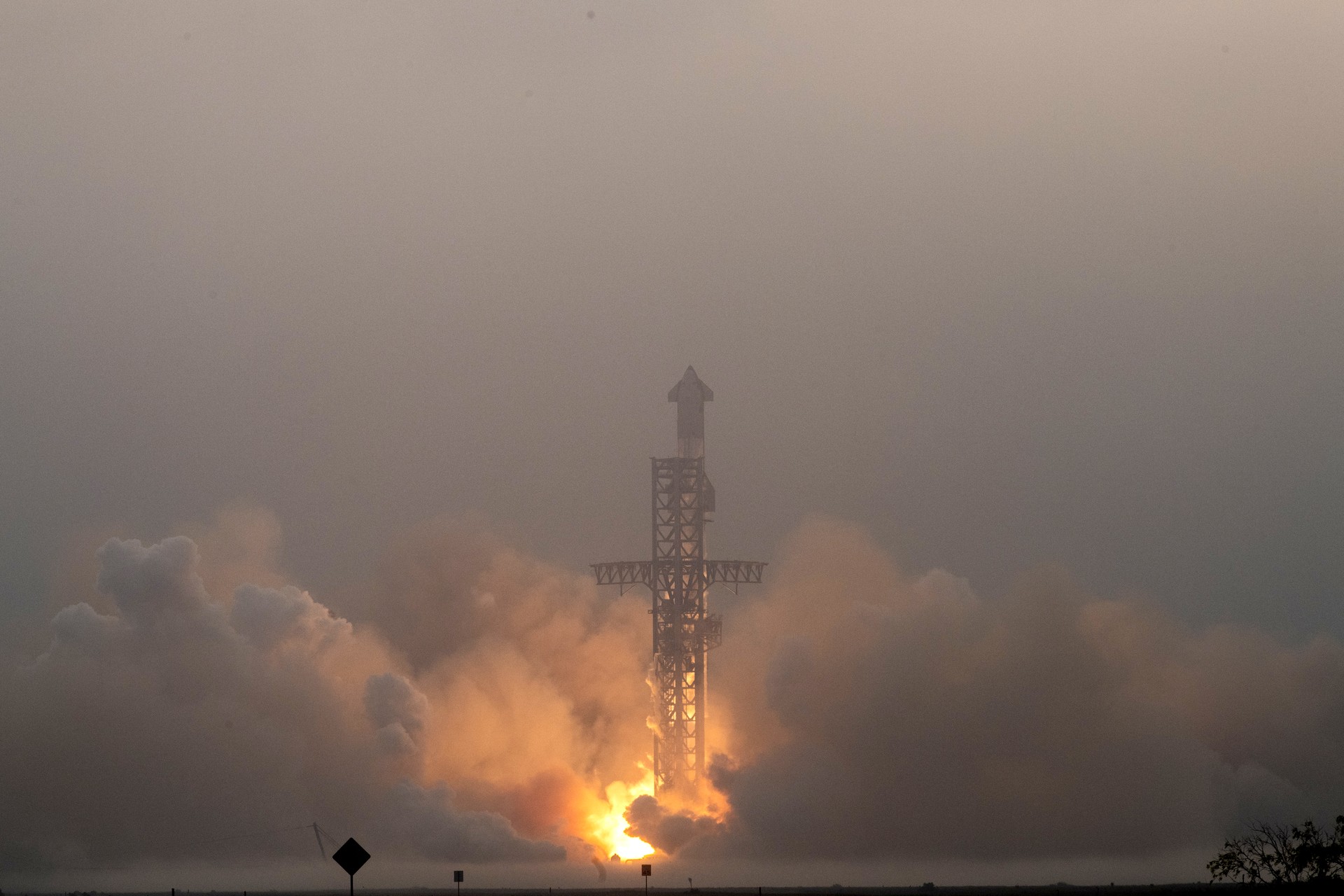
SpaceX's Starship rocket successfully achieved its first splashdown during a test flight Thursday, marking a significant milestone for the prototype system that may one day send humans to Mars.
As the spaceship descended over the Indian Ocean northwest of Australia, fiery debris was seen flying off, but the rocket ultimately held together and survived atmospheric reentry. Dramatic footage from an onboard camera captured the descent.
"Despite loss of many tiles and a damaged flap, Starship made it all the way to a soft landing in the ocean!" SpaceX CEO Elon Musk wrote on X. "Today was a great day for humanity's future as a spacefaring civilization!"
The rocket, the most powerful ever built, launched from SpaceX's Starbase in Boca Chica, Texas, at 7:50 a.m. (1250 GMT). It soared into space and coasted halfway across the globe, completing a journey that lasted around an hour and six minutes.
Starship's fully reusable design is crucial to Musk's ambitious goal of colonizing Mars and making humankind a multi-planetary species. NASA has also contracted a modified version of Starship to take astronauts to the surface of the Moon under the Artemis program later this decade.
Previous test flights had ended in the rocket's destruction, part of SpaceX's rapid trial-and-error approach to development. "The payload for these flight tests is data," SpaceX stated on X, a sentiment echoed throughout the flight's commentary.
The next challenge is to develop a "fully and immediately reusable orbital heat shield," Musk said, with further tests planned to improve Starship's ability to withstand reentry speeds of around 27,000 kilometers per hour (nearly 17,000 mph).
Approximately seven and a half minutes after liftoff, the first stage booster, Super Heavy, successfully splashed down upright in the Gulf of Mexico, drawing massive applause from engineers at mission control in Hawthorne, California.
Cheers erupted again in the flight's final minutes as the upper stage glowed a fiery red, the result of a plasma field generated by the vehicle streaking through the atmosphere. A chunk of flying debris cracked the camera lens, but the rocket successfully landed in the ocean.
"Congratulations SpaceX on Starship's successful test flight this morning!" NASA chief Bill Nelson wrote on X. "We are another step closer to returning humanity to the Moon through #Artemis -- then looking onward to Mars."
Starship stands 397 feet (121 meters) tall with both stages combined, making it 90 feet taller than the Statue of Liberty. Its Super Heavy booster produces 16.7 million pounds (74.3 Meganewtons) of thrust, about twice as powerful as the Saturn V rockets used during the Apollo missions. Future versions are expected to be even more powerful.
SpaceX's strategy of real-world testing has proven effective in the past. Falcon 9 rockets are now workhorses for NASA and the commercial sector, the Dragon capsule transports astronauts and cargo to the International Space Station, and the Starlink internet satellite constellation covers dozens of countries.
However, the clock is ticking for SpaceX to be ready for NASA's planned return of astronauts to the Moon in 2026. This mission requires placing a primary Starship in orbit and using multiple "Starship tankers" to refuel it with supercooled fuel—an engineering feat never before accomplished.